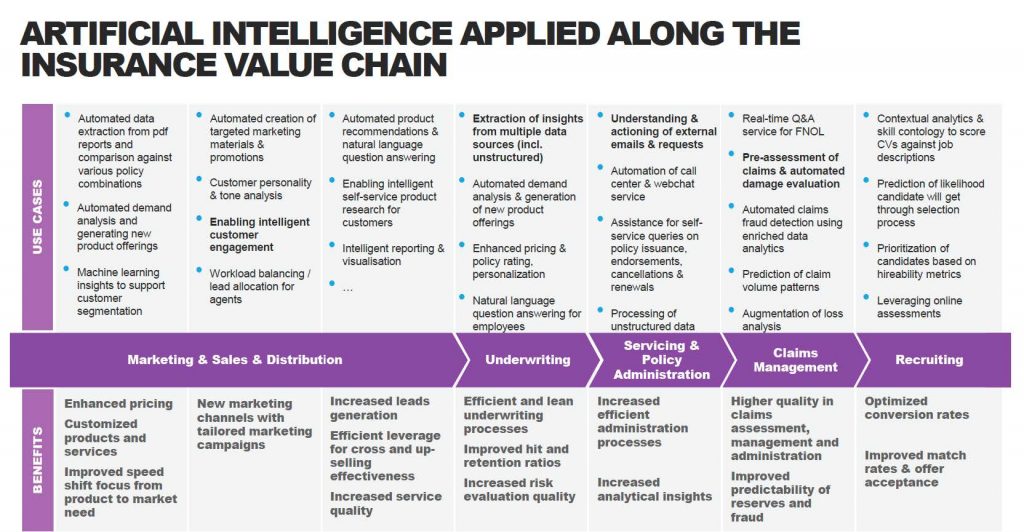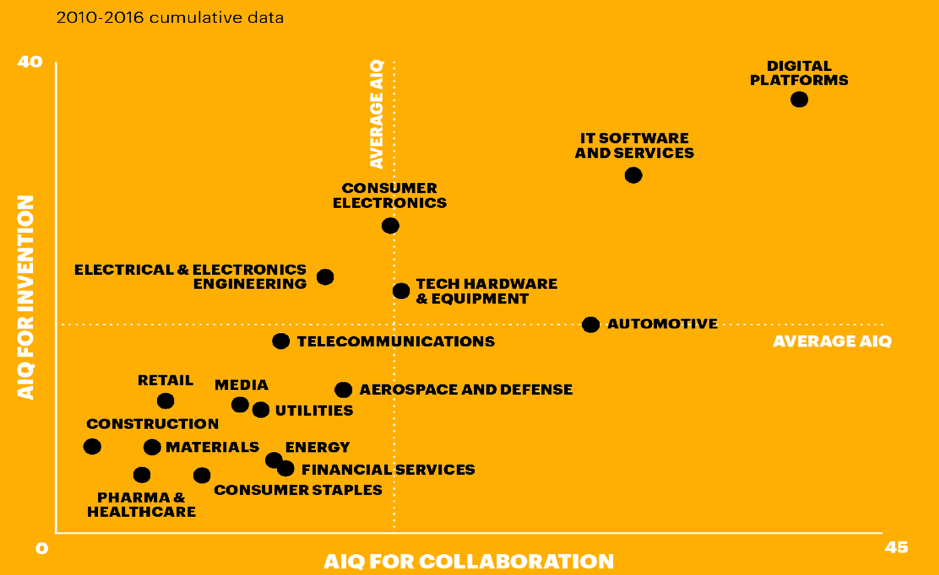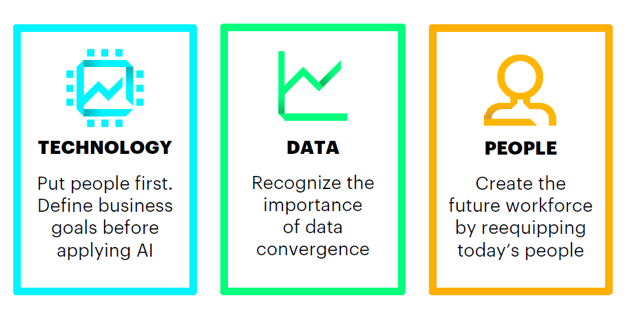Are Insurers Ready for Voice Search?
In a world where customers already do research and contact insurers via multiple channels, voice assistants are a natural frontier for marketing.

In a world where customers already do research and contact insurers via multiple channels, voice assistants are a natural frontier for marketing.

Get Involved
Our authors are what set Insurance Thought Leadership apart.
|
Partner with us
We’d love to talk to you about how we can improve your marketing ROI.
|

Tom Hammond is the chief strategy officer at Confie. He was previously the president of U.S. operations at Bolt Solutions.
A recent recommendation to start colonoscopies at age 45 shows why the U.S. suffers from over-treatment and worse outcomes.

Get Involved
Our authors are what set Insurance Thought Leadership apart.
|
Partner with us
We’d love to talk to you about how we can improve your marketing ROI.
|

Al Lewis, widely credited with having invented disease management, is co-founder and CEO of Quizzify, the leading employee health literacy vendor. He was founding president of the Care Continuum Alliance and is president of the Disease Management Purchasing Consortium.
Agents and brokers need to consider three things: multi-generational marketing, administration tools and digital strategy.

Get Involved
Our authors are what set Insurance Thought Leadership apart.
|
Partner with us
We’d love to talk to you about how we can improve your marketing ROI.
|

Mike de Waal is senior vice president of sales at Majesco.
Insurers need a much higher artificial intelligence quotient (AIQ), but they face a crucial talent gap among employees.

“Human plus machine isn’t the future, it’s the present; Don’t fear intelligent machines, work with them.”Please note, he says “plus” not “versus” or “against.” I believe he is right – there is actually an optimistic story of unlocked potential. When AI was enlisted to detect breast cancer A team of Harvard pathologists recently showed how some commentators on the future of artificial intelligence – who either wax enthusiastic about the productivity gains or predict the elimination of jobs – are missing the most important point. The doctors created an AI-based technique to identify breast cancer cells. It did well, scoring 92% accuracy, but still fell short of human pathologists, who typically achieve precision rates of around 96%. The biggest surprise came when humans and AI combined forces. Together, they accurately identified 99.5% of cancerous biopsies. Much like Kasparov, I believe this is how AI will realize its fullest potential—when human ingenuity and intelligent machines combine synergistically to deliver more than either can on its own. How does this relate to Insurance? There are numerous use cases of AI that can be applied along the insurance value chain, such as enhanced pricing, customized products and services, efficient underwriting and claims administration processes.
 Sales & Distribution — Employing machine learning insights to support customer segmentation could lead to benefits such as customized products and services and increased sales.
Underwriting & Risk Management — The extraction of insights from multiple data sources can lead to improved risk evaluation quality and, hence, better pricing.
Servicing — using machine learning to handle external emails and requests can lead to an increased efficiency in administration processes.
Claims — The pre-assessment of claims and automated damage evaluation leads to higher quality and accuracy in claims assessment, management and administration and, hence, to cost savings.
Recruiting — Leveraging contextual analytics and skills-based ontology to score resumes against job descriptions leads to an optimized conversion rate.
There are many benefits for insurers – more efficiency, better pricing, customized products and services.
AI will deliver efficiencies, but its greatest benefit will be to drive growth. Especially when it’s used primarily to augment the capabilities of humans.
Artificial intelligence is set to play a major role in insurance, not only by improving efficiencies but by significantly enhancing the customer experience, boosting innovation and opening up new sources of growth.
Accenture conducted an econometric analysis that forecasts that insurers that invest in AI and human-machine collaboration at the same rate as top-performing businesses could not only profit from becoming a more efficient company but also boost their revenue by an average 17% by 2022.
But the research revealed that, while executives expect AI to completely transform insurance, they believe only 25% of their employees are ready to work with intelligent technologies.
See also: 3 Steps to Demystify Artificial Intelligence
Insurers acknowledge AI’s importance and its transformative potential. They admit their people are critical to the success of their AI initiatives, and the growing skills gap is the key factor influencing their workforce strategy, but only 4% plan to significantly increase their investment in reskilling programs over the next three years. So, there is a major disconnect in insurers’ approach to AI.
Time to Boost Your AIQ
To help insurers take the next steps toward investing in AI, we created two indexes to see what is working. We studied both the FORTUNE Global 100 and what we call the “Intelligent Global 100” – these are pioneers in the development of AI technologies and applications – for the period between 2010 and 2016. For those 200 companies, we looked at both their in-house focus (their AIQ for invention) and their outside focus (AIQ for collaboration). Both are essential.
Sales & Distribution — Employing machine learning insights to support customer segmentation could lead to benefits such as customized products and services and increased sales.
Underwriting & Risk Management — The extraction of insights from multiple data sources can lead to improved risk evaluation quality and, hence, better pricing.
Servicing — using machine learning to handle external emails and requests can lead to an increased efficiency in administration processes.
Claims — The pre-assessment of claims and automated damage evaluation leads to higher quality and accuracy in claims assessment, management and administration and, hence, to cost savings.
Recruiting — Leveraging contextual analytics and skills-based ontology to score resumes against job descriptions leads to an optimized conversion rate.
There are many benefits for insurers – more efficiency, better pricing, customized products and services.
AI will deliver efficiencies, but its greatest benefit will be to drive growth. Especially when it’s used primarily to augment the capabilities of humans.
Artificial intelligence is set to play a major role in insurance, not only by improving efficiencies but by significantly enhancing the customer experience, boosting innovation and opening up new sources of growth.
Accenture conducted an econometric analysis that forecasts that insurers that invest in AI and human-machine collaboration at the same rate as top-performing businesses could not only profit from becoming a more efficient company but also boost their revenue by an average 17% by 2022.
But the research revealed that, while executives expect AI to completely transform insurance, they believe only 25% of their employees are ready to work with intelligent technologies.
See also: 3 Steps to Demystify Artificial Intelligence
Insurers acknowledge AI’s importance and its transformative potential. They admit their people are critical to the success of their AI initiatives, and the growing skills gap is the key factor influencing their workforce strategy, but only 4% plan to significantly increase their investment in reskilling programs over the next three years. So, there is a major disconnect in insurers’ approach to AI.
Time to Boost Your AIQ
To help insurers take the next steps toward investing in AI, we created two indexes to see what is working. We studied both the FORTUNE Global 100 and what we call the “Intelligent Global 100” – these are pioneers in the development of AI technologies and applications – for the period between 2010 and 2016. For those 200 companies, we looked at both their in-house focus (their AIQ for invention) and their outside focus (AIQ for collaboration). Both are essential.
 Organizations with a high AIQ invest significantly in their in-house AI capabilities and collaborate externally. Yet our analysis revealed that fewer than 20% score well on both indexes — those companies we call “collaborative inventors” (who balance in-house innovation with external collaboration) — while 56% were weak on both.
Not surprisingly, financial services (as you can see in the lower left quadrant) currently has one of the weakest scores on this matrix.
Organizations with a high AIQ invest significantly in their in-house AI capabilities and collaborate externally. Yet our analysis revealed that fewer than 20% score well on both indexes — those companies we call “collaborative inventors” (who balance in-house innovation with external collaboration) — while 56% were weak on both.
Not surprisingly, financial services (as you can see in the lower left quadrant) currently has one of the weakest scores on this matrix.
 How do you build your AIQ?
There are three key ingredients to building a high AIQ: Insurers need to own some of the technology (but define business goals before applying AI), some of the data (recognize the importance of data convergence) and some of the talent (create the future workforce; start reskilling your staff). And they will also need to be deeply involved in a broader ecosystem.
How do you build your AIQ?
There are three key ingredients to building a high AIQ: Insurers need to own some of the technology (but define business goals before applying AI), some of the data (recognize the importance of data convergence) and some of the talent (create the future workforce; start reskilling your staff). And they will also need to be deeply involved in a broader ecosystem.
 You need to work at all three, both in-house and collaboratively, to achieve success.
Business leaders need to evaluate how they invest in technology, data and people. To start, they need to ask themselves the following tough questions:
Technology:
You need to work at all three, both in-house and collaboratively, to achieve success.
Business leaders need to evaluate how they invest in technology, data and people. To start, they need to ask themselves the following tough questions:
Technology:
Get Involved
Our authors are what set Insurance Thought Leadership apart.
|
Partner with us
We’d love to talk to you about how we can improve your marketing ROI.
|
Some individuals still want to receive information in the traditional ways, but the tide is turning, and insurers must catch up with customers.

Common things we hear these days: “If you really want to reach me, text me.” “Send that file to me via Slack.” “I live on Facebook, so send me a message on Facebook Messenger.”
We also observe that many people never answer voicemail, virtually ignore emails and throw away mail without even looking at it.
These are samplings of the communication patterns that are evolving in our society today. Meanwhile, how do we in the insurance industry communicate with our policyholders, agents, claimants and others? Email, phone calls and documents in the mail predominate. Web portals are also common. Some of the newer options for interaction are not on the radar of most insurers. Now, there are certainly individuals who still want to receive information in the traditional ways, and there will continue to be a need for these options, but the tide is turning.
See also: The Missing Piece for Customer ExperienceSMA has been investigating some new communication options and their implications for insurers. Our new research report, Advanced Customer Communications in the Digital Age: New Options for Insurers, explores how communications have evolved, how the insurance industry is using these options (or not), example use cases and what it all means in the context of an omni-channel environment.
Some of the new(er) forms of communication that have been gaining adoption and setting new expectations for customers include:
The way the world communicates is rapidly changing, and everyone has their favorite options. Insurers would be wise to consider these in their customer journey and omni-channel strategies and plans.
Get Involved
Our authors are what set Insurance Thought Leadership apart.
|
Partner with us
We’d love to talk to you about how we can improve your marketing ROI.
|

Mark Breading is a partner at Strategy Meets Action, a Resource Pro company that helps insurers develop and validate their IT strategies and plans, better understand how their investments measure up in today's highly competitive environment and gain clarity on solution options and vendor selection.
It's exciting to see companies bring to life the sorts of dreams that many of us have been describing for years now.

Greetings from Las Vegas, where we've gathered for the third InsureTech Connect with 6,000 or so of our closest friends. That's about twice as many attendees as last year, which was twice as many as the first year. Exponential growth is good, right? And the group now represents what a venture capitalist might call a "full stack" -- all types of companies, investors, startups, technologies, countries, you-name-it are represented here.
It's exciting to see companies bring to life the sorts of dreams that many of us have been describing for years now. For example, I met with Cover Genius, which takes an API-based (as in, application programming interface) view of the world that enables a model I've described as "Do you want fries with that?" The startup offers digital versions of insurance products that e-commerce companies can bundle into their offerings, generating savings on costs of sales that can be shared with customers. The first big success has been with rental-car insurance that travel sites can offer when someone makes a booking. The price from Cover Genius is much lower than what you'd be quoted at the rental car counter. And I believe that Cover Genius is just scratching the surface. As insurance products become APIs that can fit into any digital product or service and any sales process, the lower prices and ease of purchase will have customers ordering lots of "meal deals."
I was also struck by the work at Parsyl, which is just coming out of stealth mode with an ingenious application of the Internet of Things that reifies another of my big themes: that insurance should increasingly be about preventing the bad stuff from happening in the first place. Parsyl, which has formed a partnership with AXA XL, has developed sophisticated, reusable sensors that can be placed in shipments to make sure they stay within certain important ranges, such as temperature in the case of a load of fish. The sensors don't just trigger an insurance payment if there is a problem, as current, simple sensors can, but can signal when an indicator is heading out of range, so that someone might be able to intervene. In any case, the sensors record when and where a problem occurred, so responsibility can be assigned quickly and accurately and so steps can be taken to prevent a recurrence.
I found reason to be optimistic because of a workshop that our own Guy Fraker, ITL's chief innovation officer, ran for some 60 executives from incumbents that are trying to figure out how to set up innovation programs. He took the group through some exercises that showed them that they could quickly generate lots of hypotheses for potentially important innovations and assured them, "You only need four or five people to drive innovation. You don't need 100. This is not Big Pharma R&D."
The cherry on top was that a representative from a major auto maker told the group that he was looking to break out the insurance piece that goes into the monthly price for his vehicle subscription program -- people who "subscribe" are basically leasing a car but for an indefinite period longer than 30 days and can pick and choose among a certain set of vehicles, such as a sports car line. These subscription programs are growing fast at any number of auto makers, so why wouldn't others be interested in breaking out the insurance piece, offloading the risk and making the monthly price for the car at least look lower? Why couldn't some enterprising company come along with a white label product, expressed as an API that could fit into the processes of all these car makers? You could almost hear the wheels turning in people's heads as they thought through the possibilities.
Maybe someone will announce such a product at next year's ITC. Or, why wait until then?
Have a thought-provoking week.
Paul Carroll
Editor-in-Chief
Get Involved
Our authors are what set Insurance Thought Leadership apart.
|
Partner with us
We’d love to talk to you about how we can improve your marketing ROI.
|

Paul Carroll is the editor-in-chief of Insurance Thought Leadership.
He is also co-author of A Brief History of a Perfect Future: Inventing the Future We Can Proudly Leave Our Kids by 2050 and Billion Dollar Lessons: What You Can Learn From the Most Inexcusable Business Failures of the Last 25 Years and the author of a best-seller on IBM, published in 1993.
Carroll spent 17 years at the Wall Street Journal as an editor and reporter; he was nominated twice for the Pulitzer Prize. He later was a finalist for a National Magazine Award.
No matter the size of your company or the lines you deal in, having an engaged team makes all the difference.

After three decades working in this competitive industry, I have come to understand the very significant role that employee engagement plays in the success of any insurance company. No matter the size of your company or the lines you deal in, having an engaged team makes all the difference.
I have seen this in action, first-hand, as the CEO of IAT Insurance Group. When I joined the company four years ago, IAT’s underwriting results were underperforming. For the last three years, however, we have turned an underwriting profit.
What changed? In part, this came about by refocusing the company on underwriting discipline and restructuring key operations. I firmly believe, however, that it is also due in large part to a renewed emphasis we have placed, company-wide, on fostering employee engagement. We could not have achieved such an immediate turnaround in results without the input of our employees.
A focused program of specific, concrete actions key to employee engagement
Employees are savvy. They know when management is all talk. This is especially true when it comes to employee engagement. Insurance companies must take concrete actions that are more than just motivational poster slogans to foster a positive — and profitable — working environment.
See also: Employee Wellness Plans’ Code of Conduct
This is why we have engaged in a focused program over the past four years with specific tactics to foster an employee culture that creates productivity and growth. This includes:
Measure and benchmark to ensure employee engagement goals are met
Even with concrete actions, no program to increase employee engagement could be considered a success without hard data to back it up. Yes, IAT began turning an underwriting profit three years ago and has continued to do so, but we wanted more direct proof our initiatives were having an impact on the work culture at our company. So, for the last three years we have commissioned well-known corporate leadership consultant Kevin Kruse to conduct an employee engagement survey. Each year’s results have shown marked improvement.
The 2018 findings are particularly noteworthy:
The metrics are gratifying proof that our collective hard work and the company’s investment of time and money into employee engagement have paid real dividends.
See also: 4 Good Ways to Welcome Employees
Invest in your employees, and they will pay it back, with interest
Peter Kellogg, our owner, has always said, “Take care of your people, and they will take care of the business.” Any company wanting an edge in today’s competitive marketplace would be wise to take a good, hard look at what it does around employee engagement, and make any and all necessary changes accordingly.
Get Involved
Our authors are what set Insurance Thought Leadership apart.
|
Partner with us
We’d love to talk to you about how we can improve your marketing ROI.
|

Bill Cunningham is CEO of IAT Insurance Group.
The current system is economically unsustainable and morally unforgivable, requiring cleanup from insurers and better clarity from lawyers.

Get Involved
Our authors are what set Insurance Thought Leadership apart.
|
Partner with us
We’d love to talk to you about how we can improve your marketing ROI.
|
When a broker is selling a life insurance policy--and can deftly communicate in the customer's language---sales go up.

Get Involved
Our authors are what set Insurance Thought Leadership apart.
|
Partner with us
We’d love to talk to you about how we can improve your marketing ROI.
|
Are companies not interested in buying, or is the insurance market failing to deliver the necessary protection for cyber today?

Get Involved
Our authors are what set Insurance Thought Leadership apart.
|
Partner with us
We’d love to talk to you about how we can improve your marketing ROI.
|

Matthew Grant is the CEO of Instech, which publishes reports, newsletters, podcasts and articles and hosts weekly events to support leading providers of innovative technology in and around insurance.